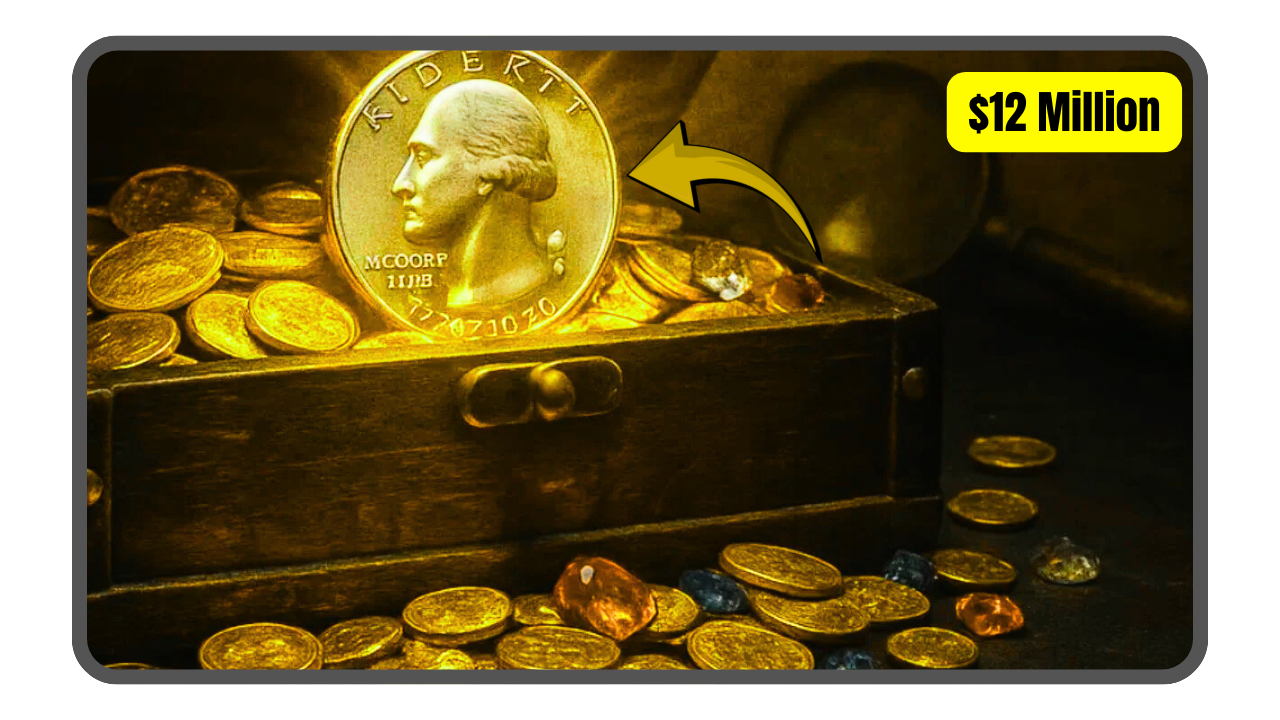Picture finding a quarter in your pocket that’s worth $12 million! That’s the dream for coin collectors after a rare 1976 Bicentennial quarter sold for a jaw-dropping $12 million at a recent auction. These quarters, made to celebrate America’s 200th birthday, are common in most wallets, but a few super-rare versions are driving collectors wild. One lucky person found such a gem in loose change, and now everyone’s checking their coins. Here’s why these quarters are so special and how to spot one that could make you rich.
What Makes a Bicentennial Quarter Special?
Bicentennial quarters were minted in 1975 and 1976 to mark the U.S.’s 200th anniversary, featuring a unique design with a drummer boy on the back and dual dates “1776-1976” on the front. Most are worth just 25 cents, but a few rare ones stand out. Some were struck in 40% silver instead of the usual copper-nickel mix, and others have errors like double-stamped designs or missing mint marks. A 1976-S silver Bicentennial quarter in perfect condition recently fetched $12 million because of its rarity and flawless state.
Why Some Are Worth Millions
The value of a Bicentennial quarter hinges on a few key factors: material, condition, and errors. Silver quarters, made only at the San Francisco Mint (marked with an “S”), are much rarer than regular ones. Errors, like a double-die obverse (where the design looks doubled) or a missing mint mark, can skyrocket the price. A low serial number or a quarter in “Gem Uncirculated” condition—looking brand new—can also make it a collector’s dream. Even circulated rare versions might be worth $50 to $1,000.
|
Feature |
What to Look For |
Potential Value |
|---|---|---|
|
Material |
40% silver (San Francisco Mint, “S” mark) |
$10 to $12 million |
|
Mint Mark |
Missing or “S” mark |
$50 to $1,000+ |
|
Condition |
No scratches or wear (Uncirculated) |
Highest value |
|
Errors |
Double-die or misaligned design |
$100 to $12 million |
How to Spot a Valuable Quarter
You don’t need to be a coin expert to find a valuable Bicentennial quarter. Check the date for “1776-1976” and look for an “S” mint mark on the front, near Washington’s head, which means it might be silver. Weigh the coin if you can—silver quarters are heavier (about 5.67 grams) than copper-nickel ones (5.44 grams). Look closely for errors, like doubled letters or blurry designs, using a magnifying glass. If the quarter looks shiny and untouched, it could be worth more. Handle it carefully with gloves or tweezers to keep it in top shape.
Where These Coins Might Be Hiding
Bicentennial quarters are still in circulation, so you could find one in your change at a store, restaurant, or even your piggy bank. Check old coin collections, jars of loose change, or family heirlooms—grandparents might have saved some from the ‘70s. Coin rolls from banks are another great place to look; ask for $10 rolls of quarters and sort through them. If you find a promising one, take it to a coin dealer or use online tools like PCGS Coin Facts to check its rarity. Auction houses or local coin shops can give you a proper appraisal.
Don’t Spend That Quarter Yet!
The $12 million sale of a Bicentennial quarter has sparked a treasure hunt across the country. One person found theirs in a laundromat change machine, proving these coins are still out there. Even if your quarter isn’t worth millions, a silver or error version could bring in hundreds or thousands—enough for a nice treat or to pay off some bills. With cash use fading, it’s easy to overlook coins, but this story shows they can hold big value. So, grab your change jar, check those quarters, and see if you’re holding a tiny fortune. You might just be a pocket away from a life-changing find!
